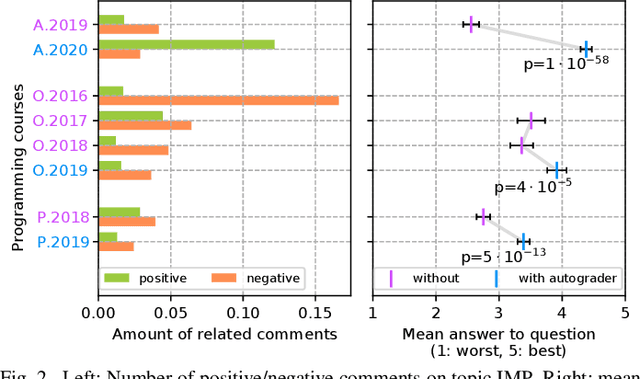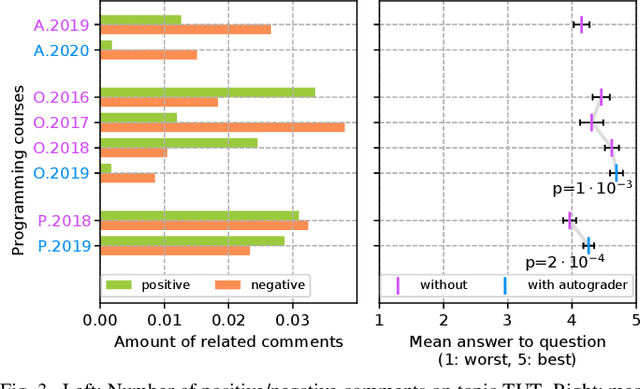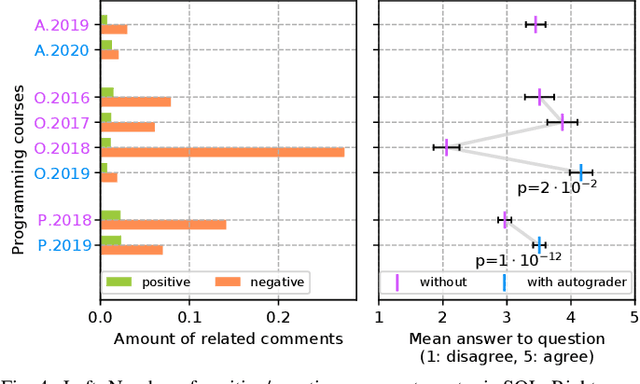Laura Lahesoo
An Analysis of Programming Course Evaluations Before and After the Introduction of an Autograder
Oct 28, 2021



Abstract:Commonly, introductory programming courses in higher education institutions have hundreds of participating students eager to learn to program. The manual effort for reviewing the submitted source code and for providing feedback can no longer be managed. Manually reviewing the submitted homework can be subjective and unfair, particularly if many tutors are responsible for grading. Different autograders can help in this situation; however, there is a lack of knowledge about how autograders can impact students' overall perception of programming classes and teaching. This is relevant for course organizers and institutions to keep their programming courses attractive while coping with increasing students. This paper studies the answers to the standardized university evaluation questionnaires of multiple large-scale foundational computer science courses which recently introduced autograding. The differences before and after this intervention are analyzed. By incorporating additional observations, we hypothesize how the autograder might have contributed to the significant changes in the data, such as, improved interactions between tutors and students, improved overall course quality, improved learning success, increased time spent, and reduced difficulty. This qualitative study aims to provide hypotheses for future research to define and conduct quantitative surveys and data analysis. The autograder technology can be validated as a teaching method to improve student satisfaction with programming courses.
* Accepted full paper article on IEEE ITHET 2021
 Add to Chrome
Add to Chrome Add to Firefox
Add to Firefox Add to Edge
Add to Edge